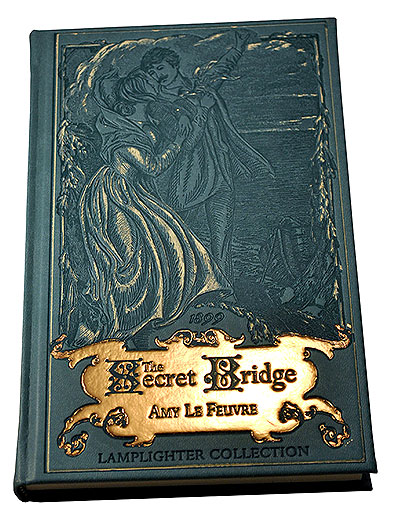
by Lara Copeland, assistant editor, PostPress
 For over 20 years, Lamplighter Publishing, a division of Lamplighter Ministries based in Mount Morris, New York, has produced numerous publications, including illustrated books, resource books and audio dramas. Additionally, Lamplighter has edited and published 130 vintage titles. The books contained in this collection feature stories originally published 100 to 400 years ago. With tales that take place around the world and feature a variety of characters – from kings and peasants, to sailors and warriors, to little girls and mischievous boys – the books are sure to capture a variety of readers. An intriguing cover also draws attention to a book, and Lamplighter’s 2017 edition of The Secret Bridge, by Amy Le Feuvre, originally published in 1899, does just that.
For over 20 years, Lamplighter Publishing, a division of Lamplighter Ministries based in Mount Morris, New York, has produced numerous publications, including illustrated books, resource books and audio dramas. Additionally, Lamplighter has edited and published 130 vintage titles. The books contained in this collection feature stories originally published 100 to 400 years ago. With tales that take place around the world and feature a variety of characters – from kings and peasants, to sailors and warriors, to little girls and mischievous boys – the books are sure to capture a variety of readers. An intriguing cover also draws attention to a book, and Lamplighter’s 2017 edition of The Secret Bridge, by Amy Le Feuvre, originally published in 1899, does just that.
Lamplighter Publishing set out from the beginning of this project to create a striking and attractive hardback cover for Le Feuvre’s book. Hoping to fashion a more intricate design than what had previously been produced, Graphic Artist Lorraine Larsen was instructed to “make it the best one ever” because “the story was so wonderful,” she said. “Many of the previous covers had more generic, decorative motifs,” she continued, “but this time we wanted to create a cover that was compelling and specific to the storyline.” Often drawing from period sources, Larsen is accustomed to planning her cover designs to reflect specific facets of the 17th, 18th and 19th centuries. Her cover for The Secret Bridge depicts a couple in Victorian-era garb looking longingly at one another. Larsen remarked, “The finished design has multiple sources, composed and altered, in fitting to the details of the characters portrayed.” The illustration was entirely hand drawn to maintain a line suitable for die reproduction.
The publisher was eager to test the bounds to see the range of details it could stamp on its cover. Managing Editor Bridgette Heap decided to do a test run using magnesium dies from OWOSSO Graphic Arts. As a result, the publishing team recognized that some lines were too heavy and some too thin, while others needed to be revised. “Our graphic artist had to go back into her image and rework most of the lines until we felt they were substantial enough, but still fine and detailed,” Heap said. Once Larsen altered the necessary lines, production-ready copper dies were ordered from Owosso and the hardback cover was completed.
Lamplighter chose cover board and spine hollow material and used a casemaking station to create the book. “As these materials go through this station, they become glued to our F143 Vivella Evolution cover material, shipped over from Italy,” explained Nathan Baxter, a bindery worker for Lamplighter. The book was printed on trade book cream stock, and the stamping process was done using an ACROMARK 10-ton press hot stamper. “There was a burnish stamp on both the cover and spine which required intense temperature and average dwell and pressure,” Baxter clarified. Additionally, there were three other stamps which all used foils. One foil, a K110 Cream foil, is stamped onto the cover and spine. A 333K1 copper is only stamped to the cover.
Creating such a meticulously designed cover did not come without its challenges. “During the production of the cover, our greatest challenge was keeping the K110 foil from flaking off when exposed to high heat,” Baxter added. To solve this problem, “we hand fed the foil so that it was not up against the hot copper die plate,” he said. Another production challenge – avoiding the fading of the burnish after repeated stamps – was solved by increasing the temperature and stamping the burnish more slowly so that even if the die plate cooled slightly, it would remain hot enough to burn properly.
Overcoming the production obstacles has paid off. Responses have been overwhelmingly positive to Lamplighter’s edition of the book. “Customers were calling and emailing to tell us this was the most beautiful book they have bought from us,” Heap recalled. Using words like “stunning” to describe the book’s binding, reviewers focused on the beauty of the bright foil accents adorning the title near the bottom third of the cover. In addition to this praise, the book cover also won the Foil & Specialty Effects Association’s (FSEA) Gold Leaf Award for most difficult use of foil and embossing – hardback book cover.

